Sponsored
Tweet it from Everest: "OMG! we're halfway up!" (AP) : Technet |
- Tweet it from Everest: "OMG! we're halfway up!" (AP)
- LCD TV companies see falling prices as demand down (AP)
- Take-Two CEO steps down to travel with family (AP)
- Hands-on with Sony’s Google TV/Blu-ray combo deck (Ben Patterson)
- iPhone 4 for Verizon is ‘fait accompli,’ Fortune claims (Ben Patterson)
- Mistype Twitter or Facebook, Win an IPad (or Not) (PC World)
- Best Blu-ray movies (Digital Trends)
- Ceragon Networks (Investor's Business Daily)
- Facebook Buys Most of Content-sharing Site Drop.io (PC World)
- YouTube co-founder Chad Hurley steps down as CEO (Reuters)
- On MySpace's New Strategy (Mashable)
- The coolest apps not available on the iPhone (Appolicious)
- Take-Two Interactive's CEO stepping down, shares rise (Reuters)
- IBM in talks to buy Fortinet: report (Reuters)
- The Top 10 Stories in IT This Week (PC World)
- YouTube co-founder Chad Hurley steps down as CEO (AP)
| Tweet it from Everest: "OMG! we're halfway up!" (AP) Posted: 29 Oct 2010 03:21 PM PDT KATMANDU, Nepal – You can't get away from a cell phone call, even at the top of the world. Thanks to 3G towers newly installed near Mount Everest's base camp, explorers can surf the Web, tweet and post Facebook updates without worrying that their signals will disappear into thin air. The new high-speed service, announced Friday by Ncell, a subsidiary of Swedish telecom company TeliaSonera, will allow mountaineers setting off to the summit of the world's tallest mountain to access wireless Internet and make video calls to family, friends and supporters. "You know, I think it's kind of good and kind of bad, but to me it's kind of inevitable," said renowned climber Ed Viesturs, frequently described as the strongest U.S. high-altitude mountaineer. The 51-year-old veteran of seven climbs to Everest's 29,035-foot summit said the new technology is not for him. "I'm kind of old school," said Viesturs, who has climbed all 14 of the world's highest peaks. "But you can imagine the newer generation saying, 'No, bring it on. The more the better.'" Every year, thousands of trekkers from all over the world walk to Everest's base camp at 17,000 feet, and hundreds of mountaineers take on the arduous and dangerous route to the summit. Until now, they were forced to carry heavy — and expensive — satellite equipment to transmit information and images from base camp. On the climb, mountaineers carry handheld VHF radios to talk with base camp, though an expedition might also carry a satellite phone to contact sponsors and family. For 25-year-old Leif Whittaker, who summited Everest for the first time in May — calling his mother on the descent, using a satellite phone — the advantage comes down to being able to easily phone home. "Just being able to communicate with your family and friends would make it a lot easier to spend two months in a tent away from home," said Whittaker, whose father, Jim Whittaker, was the first American to summit Everest. But there is a risk that it could be a dangerous distraction, the Port Townsend, Washington, resident said. When attempting the summit, "you need to stay focused in the moment." Dave Hahn, who has climbed Everest 12 times, more than any other American, noted that the north side base camp in Tibet has had cell service for several years, but not the south side in Nepal. The 48-year-old from Taos, N.M., said that when he first climbed Everest in 1991, he had equipment that allowed him to transmit lines of Telex. "That was pretty high-tech in 1991." And in 1999, when Hahn was on the expedition that found the body of legendary English mountaineer George Mallory, who died on Everest in 1924: "I remember sitting up all night figuring out how to send the photos out in big enough resolution." That will be a thing of the past now. But might Facebook, Twitter and the high-pitched sound of dozens of cell phones ringing cheapen the experience? "I hear that all the time," Hahn said. "And what can you say? Things change that way. And those of us who've beamed home pictures and stories from the place, well, we've accelerated that change." Gordon Janow, who helps set up base camps for expeditions led by Alpine Ascents International of Seattle, agreed. Trekkers in the lower elevations of the Himalayas also use cell phones, and "I don't know if it's good or bad," he said. "It was one of the few places you could go and lose yourself from the world." ___ Tibbits reported from Seattle. |
| LCD TV companies see falling prices as demand down (AP) Posted: 29 Oct 2010 01:25 PM PDT |
| Take-Two CEO steps down to travel with family (AP) Posted: 29 Oct 2010 08:58 AM PDT NEW YORK – Take-Two Interactive Software Inc., the company responsible for popular video games such as the "Grand Theft Auto" series, said Friday that the CEO hired to turn the company around will step down to travel in Asia with his family. Ben Feder's resignation is effective Jan. 1, though he will remain a partner in ZelnickMedia, the private equity firm that manages Take-Two under an agreement with the company's board of directors. Strauss Zelnick, Take-Two's executive chairman, will take on the additional role of CEO. "Now that the company is in a position of strength and is poised for solid performance in the future, the time is right for me to honor certain commitments that I have made to my family," Feder said in a statement. When Feder, 46, joined the company in 2007, Take-Two was struggling from a string of quarterly losses as well as accounting troubles and controversy surrounding the violent and sexual content of "Grand Theft Auto." Last month, the company reported that it reversed a loss from a year ago as revenue more than tripled, and it raised guidance for the year. Moreover, there's evidence that the company is less dependent on cash cow "Grand Theft Auto" than it once was. Last month, the company attributed its strong revenue to sales of a different game, "Red Dead Redemption," which is the second best-selling game of 2010, according to the latest sales figures from research firm NPD. The company also said last month that it expects to report a profit for the full year. That would be the first time in about a decade it's done so without the help of the "Grand Theft Auto" franchise. The fourth, and most recent, installment of "Grand Theft Auto" went on sale in 2008. Shares increased 28 cents, or 2.75 percent, to $10.47 in midday trading Friday. |
| Hands-on with Sony’s Google TV/Blu-ray combo deck (Ben Patterson) Posted: 29 Oct 2010 01:51 PM PDT Last week, I got the chance to spend some quality time with the stand-alone Logitech Revue, one of the first Google TV-enabled devices, and now I've got Sony's Google TV-ready Blu-ray player whirring away in my living room. So, how does the Sony combo deck compare with Logitech's stand-alone box? In addition to its new Google TV-friendly Blu-ray player ($399, available now), Sony also has a quartet of HDTVs with Google TV on tap, ranging in screen size from 24 inches ($599) to 46 inches ($1,399)—not a bad option for those who happen to be shopping for a new TV, but not so feasible for anyone who already has a perfectly good HDTV. Since I'm in the latter category, I opted for the Blu-ray deck (a loaner from Sony's PR department, by the way). The set-up process for the Sony player (a.k.a. the NSZ-GT1, for those of you keeping track) was pretty much the same as it was for the Logitech Revue. You plug your DVR's HDMI-out cable into the Sony (which lack component and composite video inputs, same as the Revue), attach a second HDMI cable (included in the box) to the Sony's HDMI output, and then connect the other end to one of your HDTV's video inputs. Also in the box: an IR blaster for controlling your DVR and an optional A/V receiver. As with the Revue, the Google TV software walks you through a relatively brief and surprisingly painless setup wizard, including determining your pay TV carrier and channel lineup, signing in to your Google account, and setting up the remote codes for your DVR and other devices. Once you're all set, you'll arrive at the standard Google TV home screen, which looks virtually identical to the one on the Logitech Revue. A few key differences include a quick link to the Google TV-optimized Sony Style website, where you can shop for more Sony-built gadgets, as well as access to Qriocity, Sony's just-launched, on-demand movie rental service. There's also a "Sony Recommends" quick link with customized channels that duplicate many of the apps (from the likes of Slacker, NPR, Flixter, Wired and eHow) available through Sony's Bravia Internet service. Again, you can search TV programming, online videos or the Web at large by pressing the magnifying-glass button on the Sony remote (about which I have plenty to say, so hang on). You can also stream movies and TV shows via a bare-bones Netflix app (an exact duplicate of the one on the Revue), rent videos on Amazon on Demand (ditto), stream media from local, DLNA-compliant PCs on your home network, and so on. (For more observations on the Google TV platform in general, check out my hands-on of the Revue from last week.) As a Blu-ray deck, the Sony box worked about as well as any Blu-ray player I've tried. I popped in the newly pressed Blu-ray of "Apocalypse Now" and the main menu loaded up in a few seconds, while the fireballs and helicopters in the famous opening sequence looked about as sharp as you could expect from a film shot in the late '70s. Yes, support for lossless audio formats such as DTS-HD Master Audio and Dolby Digital TrueHD is present and accounted for. That pretty much leaves us with the Sony's remote, a little module that feels more like a gaming controller than a TV remote, complete with itty-bitty QWERTY keys and a cramped layout of playback controls, especially compared with the far bigger Logitech remote and its full QWERTY keyboard. I picked up the Sony remote fully prepared to hate it. But to my great surprise, I liked it—or at least, I liked it more than I liked the Revue's larger, disappointly squishy remote. For starters, the compact size of the Sony remote felt a lot more appropriate for keying in quick searches from the sofa. I held it much like you'd hold a game controller, using my thumbs to type. With the larger Revue keyboard, I had to either balance it in my lap or set it down on the coffee table—not a monumental hassle, but kind of a pain. Of course, tapping the tiny keys on the smaller Sony remote is slower than touch-typing on the Revue's full-size keypad. But in my (admittedly brief) time with Google TV, I've had little desire to type out long messages or e-mails; I'm usually just tapping in short search strings—and for that, the Sony's compact, easy-to-grip keypad serves nicely. I also liked the twin navigational pads that flank the upper panel of the remote, just next to your thumbs—on the left a typical four-way clicker, on the right an optical thumbpad for using the on-screen mouse. The Revue, on the other hand, has a laptop-style trackpad that sits just above its own four-way clicker, which you have to use when you're accessing your standard DVR menus, and I often found myself getting confused when I had to switch back and forth. On the Sony remote, however, having the four-way clicker and the optical mouse on opposite ends made more sense to my TV-addled brain; rarely did I mind (or even notice) when it was time to switch from one pad to the other. I also liked how four of the most important keys—"home," "back," "menu" and "picture-in-picture"—surround the optical thumbpad, making it easy to tap them without looking. On the Revue's remote, three of the keys are near the four-way clicker, but the "menu" key is off on its own, near the space bar. Also nice: Two triggers on the remote let you scroll or zoom when surfing on the Google Chrome Web browser. But both the Revue remote and the Sony controller lack a crucial feature: backlighting for the keys. In a darkened living room, you'll need a flashlight to key in search strings. Unbelievable—and practically unforgivable, especially for remotes with this many keys. At least Android (and soon iPhone and iPad) users can take advantage of a Google TV remote app. The other main difference between Sony's Google TV Blu-ray player and the Logitech Revue is price: $399 for the Sony, $299 for the Revue. That's a lot of dough to spend on an unproved home video platform, although you could always argue that for $399, the Sony deck gives you Blu-ray playback in addition to Google TV for just $100 more than the Logitech box. All in all, I'm still feeling pretty ambivalent about Google TV. I'm warming up to searching—for example, it's far more convenient to type in "AMC" than to remember the channel number, especially given how often pay-TV companies juggle their channel lineups. And easy access to full-screen Web videos, like those on the New York Times home page, is always nice. But the few existing Google TV apps still feel rough (the Google TV Netflix app, for example, can't hold a candle to the revamped versions on the PS3 and Xbox 360), and surfing on the TV screen remains a herky-jerky experience. Meanwhile, most of the big TV networks are continuing to block their free, Web-based episodes from Google TV, although there are a few exceptions (like Fox, SyFy, and Bravo). I'm sure Google TV will improve over time (especially once third-party developers start cranking out more apps), but for now, I'd rather watch and surf on the sofa with a tablet or laptop. Anyway, that's just my take. What about you? Anyone have hands-on impressions you'd like to share? Have a question? Fire away below. — Ben Patterson is a technology writer for Yahoo! News. |
| iPhone 4 for Verizon is ‘fait accompli,’ Fortune claims (Ben Patterson) Posted: 29 Oct 2010 01:18 PM PDT Yet another major publication is coming forward claiming confirmation that the long-rumored Verizon iPhone is real. But don't get your hopes up for an iPhone 4 that's compatible with the carrier's soon-to-be-launched 4G network. In its lengthy profile of Verizon Communications CEO Ivan Seidenberg, Fortune says it has confirmed that Verizon will get the iPhone in early 2011—indeed, it's a "fait accompli," claims the magazine, although neither Apple nor Verizon will go on the record and say so. Fortune says that Verizon will get its "own version" of the iPhone 4 (sorry, no surprise iPhone 5 quite yet) and that it'll run on the carrier's existing 3G network—disappointing news for anyone hoping that the new iPhone would support Verizon's budding 4G LTE data network, which is set to go live in a few dozen U.S. markets before the year is out. Don't expect a dual-mode GSM/CDMA "world phone" either, Fortune adds, although the story suggests that Verizon FiOS subscribers might get their own iPhone app for live TV streaming. Rumors about an iPhone on Verizon are nothing new, but the flames have been fanned in recent weeks by articles in the Wall Street Journal and the New York Times. And then there's the fact that Verizon Wireless just began selling the iPad (bundled with the MiFi Wi-Fi hotspot) in its retail stores, a clear sign that relations between Apple and Verizon have been warming up. Indeed, Verizon has apparently been courting Apple since before the iPhone even launched. Fortune says Verizon's Seidenberg pleaded his case before Steve Jobs as early as the spring of 2007, a few months before the original iPhone went on sale, asking Jobs why Verizon was "in your doghouse" as far as the iPhone was concerned. The answer: because an iPhone compatible with Verizon's CDMA network wouldn't function on worldwide GSM carriers. (AT&T runs a GSM cellular network.) Well, uh ... isn't that still the case? Yep, it is, but apparently Jobs had second thoughts about Apple's "one phone for the world" strategy after AT&T's network began buckling under the pressure of all those data-hungry iPhones. He told Verizon Wireless CEO Lowell McAdam in a follow-up call that Apple had "missed something" in its earlier discussions with the carrier, Fortune reports. So, are you convinced by the latest reports of a Verizon iPhone, or will you believe it when you see it? And if Verizon does get the iPhone, will you switch to the "can you hear me now" network? — Ben Patterson is a technology writer for Yahoo! News. |
| Mistype Twitter or Facebook, Win an IPad (or Not) (PC World) Posted: 29 Oct 2010 06:00 PM PDT A slip on the keyboard could land Web surfers on questionable survey pages instead of the websites they really want to visit: Twitter, Facebook or YouTube. It's the latest twist on an old Internet game: typosquatting. Typosquatters have been around for years, registering Internet domains that are similar to popular websites, and then hoping that the traffic that they get from fat-fingered Web surfers will pay out. Often these domains do nothing more than display advertising, but in recent weeks some of them have started promoting deceptive Web pages that promise gifts such as iPads or US$1,000 gift cards. Take Twiter.com, for example. Type this into the browser and a Twitter-like page, complete with a similar blue-bird logo, pops up saying, "Dear Visitor, You've been selected to take part in our anonymous survey. Complete this 30 second questionnaire, and to say 'thank you', we'll offer you a few exclusive prizes. This offer is available today only." At the same time, a woman's voice says "congratulations" and proceeds to make the same offer. A quick check of the URL that you're on shows something that could seem very much like Twitter: twitter.com-survey2010.virtuousads.com. But that's a website that Twiter.com has redirected you to. What the page doesn't tell you is that you may have to fill out more surveys and then sign up for all kinds of services and subscription offers in order to qualify for the prizes. If you try to figure out how you landed on this page by retyping twiter.com, you're directed to a completely different page. The point is to drive Web surfers to what are known as affiliate marketing sites -- sites that pay others to generate Web traffic and sales leads. "To me, it clearly looks like it's designed to look like Twitter," said Rebecca Henderson, a computer investigative specialist with the Washington State Attorney General's Office. "I don't see how anyone could look at this practice and think it's not deceptive." Twitter doesn't like it either. The site is confusing, said Twitter spokeswoman Carolyn Penner, in an e-mail. "We are aware of, and clearly not happy about, the site. We are working towards reducing user confusion." Henderson says she started spotting the look-alike survey sites only in the past few months. You can view different versions of this theme by mistyping the YouTube (youube.com) or Facebook (acebook.com) addresses. The Facebook and YouTube versions can have the same audible offer as the Twiter.com page but are tailored to look more like the sites they imitate. Affiliate marketers can make anywhere from a few pennies to more than $1 per visitor for driving traffic to Web pages, and so the incentive to be unethical can be overwhelming. Facebook recently sued two men, Steven Richter and Jason Swan, and a Canadian affiliate marketing company called MaxBounty, saying they were linked to spam messages that tried to generate traffic for online marketing programs. Facebook says sleazy marketers are responsible for the ubiquitous "Win a free iPad" or "Win a $1,000 gift card" scams that have been circulating on the social network. These typosquatting surveys don't seem any better. "These surveys appear to be data mining operations as well as sleazy pay-per-click advertising techniques," said Andrew Brandt, lead threat researcher with antivirus vendor Webroot, speaking via instant message. "They're not delivering malware, but they are convincing enough that some people are probably providing lots of personally identifiable information about themselves to less than reputable advertisers." "Add to that the fact that some of these companies sign you up for paid SMS services in the fine print, and it starts to become clearer how you will be negatively affected." Robert McMillan covers computer security and general technology breaking news for The IDG News Service. Follow Robert on Twitter at @bobmcmillan. Robert's e-mail address is robert_mcmillan@idg.com |
| Best Blu-ray movies (Digital Trends) Posted: 29 Oct 2010 04:06 PM PDT One of the most daunting prospects facing people who are considering buying a Blu-ray player is the realization that they will need to buy a whole new library of movies. While that is a valid concern, some Blu-rays are better than others, and below is our list of ten Blu-rays out now, and five coming soon that you can add to your collection without regret. To be considered for the list, each of these movies has the highest level of digital conversion possible, so from a technical standpoint, each movie is among the best Blu-ray releases on the market. Many Blu-ray movies feature an equally stellar picture, but these are our 10 that every collector should have.
The most expensive of the Blu-ray movies on this list also gives you some of the most for your money. This-five disc set contains director Ridley Scott's "Final Cut" of the film, along with the (apparently poorly named) Director's Cut, the 1982 Theatrical Release, the 1982 International Release, and more features than you will know what to do with. One of the most influential sci-fi movies ever made, Blade Runner needs to be in your collection. If the Ultimate Version isn't for you, each version of the film is available separately, and each are equally impressive to watch. |
| Ceragon Networks (Investor's Business Daily) Posted: 29 Oct 2010 03:54 PM PDT Ceragon Networks (NMS:CRNT), a maker of networking systems for wireless carriers, was upgraded by Oppenheimer after reporting a fourth straight quarter of earnings and a 39% jump in revenue. It's also poised to supply mobile carriers building up their 4G networks as well as support older technologies, said Oppenheimer, which maintained a $14 price target. Shares surged nearly 8% to 11.06. |
| Facebook Buys Most of Content-sharing Site Drop.io (PC World) Posted: 29 Oct 2010 05:10 PM PDT Facebook said it purchased most of drop.io, an online content-sharing service, but the social-networking giant sounds more interested in acquiring the company's developers than its technology. Drop.io is a service that lets users create a "drop" where they can share documents, videos and other digital content. The user can set a time for how long the drop will exist, decide who can view the content, set permissions for who can alter the content and share content in a variety of ways, including on Facebook. Drop.io has positioned the service as one that is ideal for real-time collaboration because people can add new content to a drop and the people they are sharing it with see it immediately, without having to refresh their browsers. Also, when multiple people are viewing a drop simultaneously, they can communicate in several ways within the drop, including via an instant message client. With the acquisition, drop.io will be shutting down the service. The company did not say what it thinks will happen to the technology under Facebook. Facebook bought "most of drop.io's technology and assets," and the company's founder, Sam Lessin, will join Facebook, according to a drop.io blog post about the acquisition. Hiring Lessin may have been an important driver for the acquisition. "We can confirm that we recently completed a small talent acquisition for drop.io and acquired most of the company's assets. We're thrilled that Sam Lessin will be joining us at Facebook," Facebook said in a statement. In its blog post, drop.io said that "as of this week," people won't be able to create new drops. Until Dec. 15, users will be able to download content from drops they've already created. After that, drop.io will delete all data in drops, it said. Drop.io is free up to 100 MB of storage, but some people pay to get more storage. Nov. 15 will be the last date when drop.io will charge users for extra storage, and those paid users will also lose all their data after Dec. 15. Nancy Gohring covers mobile phones and cloud computing for The IDG News Service. Follow Nancy on Twitter at @idgnancy. Nancy's e-mail address is Nancy_Gohring@idg.com |
| YouTube co-founder Chad Hurley steps down as CEO (Reuters) Posted: 29 Oct 2010 08:39 PM PDT LOS ANGELES (Hollywood Reporter) – Chad Hurley is relinquishing his post as CEO of YouTube, the company he co-founded five years ago that revolutionized video on the Internet. Hurley said he'll remain an adviser and that Salar Kamangar, vice president of product management, will become CEO. Hurley, along with Steve Chen and Jawed Karim, launched YouTube in December 2005, and sold it a year later to Google for $1.65 billion. Chen left the company two years ago; Karim left earlier. Hurley and Chen each earned $350 million from their sale of YouTube to Google. Karim's share was $64 million. Kamangar, an early Google employee, has been running the day-to-day operation of YouTube for a couple of years. He's credited with concocting inventive ways to monetize the massive traffic it attracts. YouTube's launch ushered in the era of "user-generated-content," or UGC, and it was that sort of amateur video that remained its most popular. More recently, though, major media companies have embraced YouTube as a marketing and distribution device and the site's top videos nowadays come from the likes of Justin Bieber, Lady Gaga, Eminem and Miley Cyrus. Exceptions include a 56-second video of a baby biting his brother's finger, the six-minute "Evolution of Dance" and a video of a baby who can't stop laughing, all of which remain on YouTube's Top 10 list of the most popular videos in its history. "For the past two years, I've taken on more of an advisory role at YouTube as Salar Kamangar has led the company's day-to-day operations," Hurley said in an emailed statement. "I will continue to serve as an adviser and am excited to witness the next phase of YouTube's growth." (please visit our entertainment blog via www.reuters.com or on http://blogs.reuters.com/fanfare/) |
| On MySpace's New Strategy (Mashable) Posted: 29 Oct 2010 03:56 PM PDT The Social Analyst is a column by Mashable Co-Editor Ben Parr, where he digs into social media trends and how they are affecting companies in the space. You've probably heard by now: the new MySpace is coming. It is not only redesigned, but it is the start of a completely new direction and strategy for what was once the world's pre-eminent social network. As we reported earlier this week, the new MySpace is supposed to be a transformation from "a place for friends" to "a social entertainment destination." While MySpace profiles, friend lists and newsfeeds will all remain once the transition is complete, MySpace will no longer focus on those things. Instead, it will focus on engaging a "Generation Y" audience with the entertainment and entertainers that they love. New features like Topic Pages will help users follow their favorite TV shows, music artists, actors and games. MySpace is also introducing a new type of user: the curator. Users that exhibit a following or expertise in a specific social trend or entertainment topic can gain curator status, which gives them access to an array of tools for facilitating content discovery and leading fans of a specific subculture. The company believes that when users connect with active curators, their engagement with MySpace goes up dramatically. This is one of the things CEO Mike Jones told me during a conversation we had last week about the redesign. The company is focused on encouraging four core behaviors: discovery, collection, connection and creation. MySpace wants its users to quickly discover new and interesting entertainment content via Topic Pages, recommendations and the newsfeed. It also wants to encourage curators to facilitate this discovery with Topic Pages and Entertainment Hubs. Connecting fans, curators and entertainers is the third key behavior MySpace wants to foster, while the final behavior, creation, is something users already do with their profiles. MySpace knows that most profiles are hideous abominations of good taste, so it's encouraging users to switch to the much-cleaner Profile 3.0 design with some hip, artist-designed themes.
Is "Social Entertainment" the Right Move?
The redesign seems to be an affirmation of something we've known for a long time: MySpace's strength is in entertainment, not social networking. It lost the technology battle long ago to Facebook, and only now is it realizing that it has to get out of its giant shadow in order to spark a turnaround. MySpace's new strategy has some major risks. The big one is that it has now established itself as a product of a smaller niche (entertainment for "Generation Y"). In other words, it has a smaller potential userbase than Facebook or even Twitter. As I've said before though, MySpace lost the war with Facebook long ago. As a friend close to MySpace told me earlier this week, the company had to "go for it." Staying the course would have doomed it to oblivion. The new design is a realization of who really visits MySpace and why they're really there. Today's youth connect with each other through Facebook, but many of them still get their entertainment fix from MySpace. The company's strategic focus on finding better ways to deliver entertainment content in addicting doses is refreshing and the best (and most realistic) strategy at its disposal. While there are no guarantees that the new strategy will turn things around, the combination of a focused direction and a stylish design gives me hope that MySpace may actually be able to pull off one hell of a comeback. Its biggest obstacle will be convincing people to give it a second chance. |
| The coolest apps not available on the iPhone (Appolicious) Posted: 29 Oct 2010 06:33 AM PDT |
| Take-Two Interactive's CEO stepping down, shares rise (Reuters) Posted: 29 Oct 2010 02:21 PM PDT NEW YORK (Reuters) – Take-Two Interactive Software Inc, the video game publisher best known for "Grand Theft Auto," said Chief Executive Ben Feder will step down and be replaced by Strauss Zelnick, the company's executive chairman. Shares jumped more than 5 percent after the announcement, an increase that one analyst attributed to speculation that the management change could set the stage for an acquisition of Take-Two. Take-Two's shares closed up 4.7 percent, or 48 cents, at $10.67 on Nasdaq. "One could speculate this is an early signal that the company is getting closer to ultimately being taken out," said Sterne Agee analyst Arvind Bhatia. Activist investor Carl Icahn has taken a nearly 14 percent stake in the game publisher. In 2008, Electronic Arts attempted a hostile takeover of the company. Take-Two Interactive declined to comment on the rumors. "It's our policy not to comment on rumors, speculation, analyst reports or stock movements," spokesman Alan Lewis said. Other analysts dismissed the rumors and called them unfounded. "People are incorrectly inferring that for some reason this puts the company in play as a potential acquisition target," said Todd Mitchell, a Kaufman Bros analyst. Take-Two also said that Karl Slatoff, an executive vice president since 2008, will become chief operating officer, a newly created role. Slatoff is a partner at Zelnick Media, the private equity firm that manages Take-Two. "Karl's background is in strategic planning for Zelnick Media so I'm wondering if Take-Two is trying to keep the (acquisition) option open," Bhatia said. Feder, 46, had been CEO for almost four years and will work until January 1, 2011, the company said on Friday. He will be spending an extended period of time traveling in Asia with his family, the company said. Zelnick is 53. (Reporting by Liana B. Baker; Editing by Gerald E. McCormick and Carol Bishopric) |
| IBM in talks to buy Fortinet: report (Reuters) Posted: 29 Oct 2010 05:41 PM PDT NEW YORK (Reuters) – International Business Machines Corp (IBM.N) is in advanced talks to buy network security provider Fortinet Inc (FTNT.O), Bloomberg reported on Friday. Morgan Stanley (MS.N) is advising Fortinet, the news agency said, citing unnamed sources. Fortinet, IBM and Morgan Stanley were not immediately available for comment after hours on Friday. (Editing by Gary Hill) |
| The Top 10 Stories in IT This Week (PC World) Posted: 29 Oct 2010 02:10 PM PDT Attempts by Dutch authorities to take down the massive Bredolab botnet captured headlines this week, with infected PCs downloading fake antivirus software at week's end, and news surfacing that the suspected ringleader of the botnet was bringing in up to €100,000 (US$139,000) a month from his alleged illegal enterprise. In other news, Oracle's intellectual property lawsuit against SAP took a turn, but is still headed for trial on Monday. 1. Botnet-infected PCs downloading fake antivirus and Russian-Armenian botnet suspect raked in €100,000 a month: Although the Bredolab botnet was not entirely squelched by the Dutch efforts or the arrest of the group's alleged head in Armenia, security experts believe that the botnet is not likely to recover from the take-down operation. Dutch authorities warned that they expect to make more arrests. 2.Oracle-SAP case takes dramatic eleventh-hour turn SAP will no longer fight Oracle's contention that SAP contributed to copyright infringement carried out by its former subsidiary, TomorrowNow, the company said Thursday in a dramatic turn as it heads toward court on Monday. 3. New Firefox add-on hijacks Facebook, Twitter sessions and How to protect against Firesheep attacks: A new Firefox add-on called Firesheep allows its users to scan unencrypted Wi-Fi connections and take over access to Facebook, Twitter and other online services. While there are ways to protect against such online thievery, there is debate about whether those are actually foolproof. 4. FTC closes investigation into Google's Wi-Fi snooping and Italy investigates Google over claims about data gathering: While the U.S. Federal Trade Commission closed its probe into Google's Street View data gathering without bringing charges against the company, Italian authorities opened an investigation into Google's Wi-Fi snooping. 5. Oracle: Google 'directly copied' our Java code: Oracle went after Google again, updating an existing lawsuit to allege that Google "directly copied" Oracle Java code into some Android mobile-phone software code. 6. Biggest Intel chip factory opens in Vietnam: Intel's largest global chip testing and assembly factory, which cost a cool $1 billion, opened in Vietnam. 7. Apple takes fourth place in worldwide phone sales: Although Apple still lags substantially behind the three smartphone makers ahead of it in global market share, it made significant gains to break into the top five for the first time. 8. Departing Microsoft exec Ozzie paints new 5-year plan: As Chief Software Architect Ray Ozzie prepares to depart Microsoft he called on the company to get with the post-PC world before it's too late to remain competitive. 9. Wall Street Beat: Enterprise spending boosts tech: Despite its apparent resistance to the post-PC era, Microsoft's earnings report was boosted by sales of Windows 7, Xbox consoles and Office 2010. SAP, BMC and other IT heavyweights also released strong earnings reports, boosting markets overall. 10. Acer plans to unveil multiple tablets on Nov. 23 in New York: Acer added an interesting twist to the emerging tablet market with word that it will unveil multiple tablets running different OSes next month. The company did not say, however, whether any of them will be Android tablets or what they will cost. |
| YouTube co-founder Chad Hurley steps down as CEO (AP) Posted: 29 Oct 2010 06:03 PM PDT SAN FRANCISCO – YouTube CEO Chad Hurley is surrendering the reins of the popular video website that he started with two buddies as a quirky curiosity and went on to groom into a media magnet that shows more than 2 billion clips a day. The change in command announced Friday formalizes a transition that has been unfolding over the past two years as YouTube's owner, Internet search leader Google Inc., asserted more control over the website. Google dispatched one of its longtime employees, Salar Kamangar, to help Hurley steer YouTube in 2008. That move signaled Google's resolve to start making more money off its 2006 acquisition of YouTube for $1.76 billion. Kamangar's expertise is in online advertising. Since his arrival at YouTube's San Bruno headquarters, Kamangar had been running the day-to-day operations while Hurley concentrated on keeping the site's steadily growing audience happy. Kamangar now officially assumes the CEO's role while Hurley, 33, remains available as a part-time adviser. The transition will give Hurley, a designer, more time to devote to another of his business ideas, the men's clothing line Hlaska. The brand's name is a mash-up of Hawaii and Alaska, signifying its goal of becoming "the 51st state." Although YouTube has been selling more ads and striking more business partnerships since Kamangar entered the picture, Google hasn't said whether the site is profitable yet. The ads shown on YouTube are part of the roughly $625 million in revenue that Google got from so-called display advertising during the three months ending in September. That's less than 10 percent of Google's total revenue of $7.3 billion during the period. Google confirmed Hurley is stepping down after he disclosed his diminished role Thursday night at an event in Ireland. The company also said it is losing the leader of a more recent acquisition, mobile ad service AdMob. Omar Hamoui, AdMob's founder and CEO, quit for personal reasons, according to Google. His exit comes just five months after Google paid $681 million for AdMob as part of is effort to sell more advertising on mobile phones. YouTube's two other co-founders, Steve Chen and Jawed Karim, had already jumped ship. Karim left just a few months after the trio decided to set up a way to share their videos online. Chen, formerly YouTube's chief technology officer, moved on in 2008. YouTube's sale to Google enriched all three of the founders, who had met while working at the online payment service PayPal. Hurley raked in the biggest cut: 735,000 shares Google stock. Based on Google's closing price of $613.70, those shares would now be worth about $450 million. Some television and movie studios contended YouTube built its early success by looking the other way as video pirates swamped the website with copyrighted clips. Viacom Inc. even went so far as to file a lawsuit that alleged Hurley, Chen and Karim welcomed the pirated clips because they knew the material would help widen YouTube's audience. Although the lawsuit uncovered some e-mail exchanges that seemed to support some of Viacom's allegations, a federal judge ruled four months ago that YouTube had complied with U.S. laws requiring websites to remove copyright violations after they are reported. Viacom had been seeking more than $1 billion in damages in the case. YouTube now has a more cordial relationship with Hollywood, partly because Google helped develop technology that automatically flags copyrighted videos that have been uploaded to the site without approval. |
| You are subscribed to email updates from Yahoo Tech News To stop receiving these emails, you may unsubscribe now. | Email delivery powered by Google |
| Google Inc., 20 West Kinzie, Chicago IL USA 60610 | |






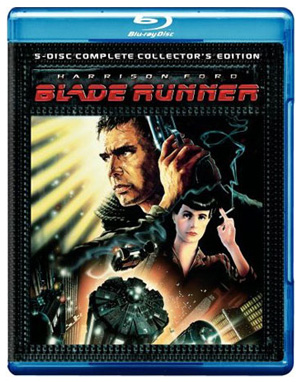
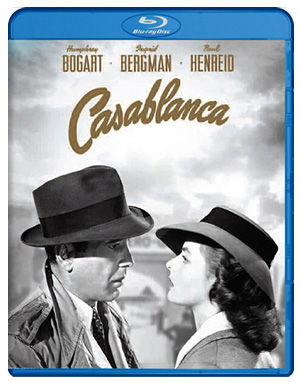
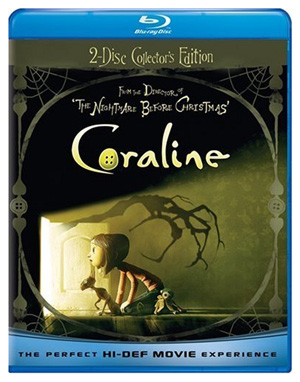


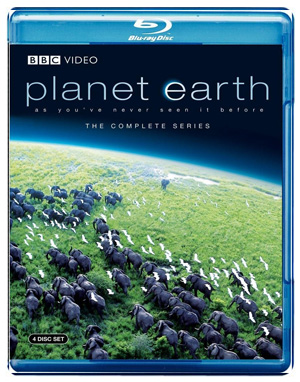




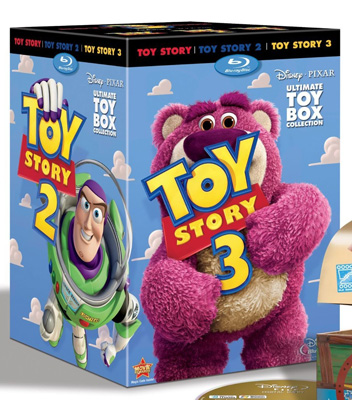
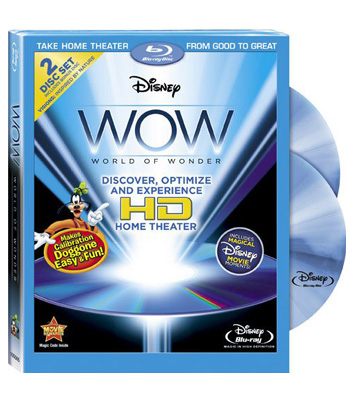

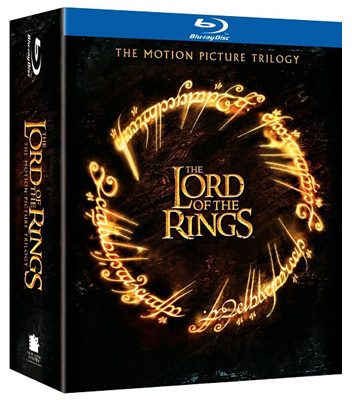
No comments:
Post a Comment